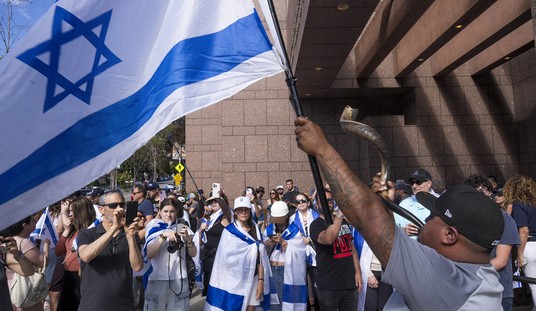After we learned about the unusual events involving reported UFOs around the aircraft carrier Nimitz in 2004, more fighter pilots began coming forward to report their own experiences. As it turns out, beginning in 2014, our pilots were running into these anomalous objects “on an almost daily basis,” particularly off the east coast ranging from Florida to Virginia. These developments eventually led to public disclosures of Pentagon programs designed to study the phenomena as well as congressional involvement leading to the formation of the new AOIMSG office that would continue that work. A public congressional hearing followed this year. But as more and more pilots have come forward, we’re learning that not all of their earlier interactions with the chain of command had been productive. Some have described their experiences as “stunning” and “exasperating.” At The Hill, Marik von Rennenkampff explores some of these experiences and asks whether things have improved for them at this point.
With aviation safety alerts as their only recourse, frustrated aviators and their commanders noted that the UFOs pose “a severe threat to Naval Aviation” and a “critical risk” to flight safety. Just days before the April 2014 incident, the squadron’s exasperated commander that “it is only a matter of time before this results in a midair [collision].” A few weeks earlier, the skipper of another East Coast squadron , “I feel it may only be a matter of time before one of our F/A-18 aircraft has a mid-air collision.”
Despite the frequency of the encounters and the severity of the hazard, it took the Navy five years to adopt a formal UFO reporting structure. The first batch of these reports, heavily redacted and spanning only a few months in 2019, makes clear that the U.S. government faces a significant challenge.
In one UFO incident, an aviator reported that he had “never seen anything like this before.” In another encounter, an aviator “noticed an object with flight characteristics unlike anything I had seen in my [redacted] years of [redacted]” — implying a particularly anomalous encounter.
These weren’t just the pilots raising complaints. Some of the most senior commanders in the air wings were expressing concerns that sooner or later we would have a collision in midair with one of these unknown objects. And until 2019, there was no formal procedure for the pilots to make reports of what appeared to be – at a minimum – a flight safety issue.
Former fighter pilot Ryan Graves was interviewed for this report. He’s become something of an advocate for military and government action regarding UFOs in controlled American airspace since leaving the service.
“I see frustration. I see confusion about what [the aviators are] seeing,” Graves told me. “That’s not normal language [in the UFO reports]. That’s not how we operate.”…
Unsurprisingly, Graves takes the Pentagon’s foot-dragging on UFOs seriously — and personally. “I lost about a friend a year on average while I was in the Navy… This is a dangerous business. To think that we’re adding more danger for no reason is outlandish,” Graves told me.
For Graves, eight years of relative government inaction since his squadron’s 2014 near-collision “is unacceptable. It’s a demonstration of ignoring the needs of their operators. That’s the bottom line.”
So pilots and senior staff are turning in reports and they have been for a few years now. But the problem is, according to Graves, that there is virtually no feedback. The Pentagon accepts the reports and they provide briefings to Congress. They’re clearly collecting data. But from the point of the view of the pilots, the process ends there. No new instructions or procedures are being handed down in terms of how to handle these encounters. And if that continues, service members may see the reports as not being of value and they may stop submitting them.
Speaking as someone who spent several years on aircraft carriers (though I never saw any UFOs back then) I have to agree that this is a concern. But if I can play devil’s advocate here for a moment, there are two points I wanted to touch on. First, at least in terms of a flight safety issue, we hear a lot of reports about “close calls” between UFOs and our fighter jets. In the recent House Intelligence Committee hearing, eleven such incidents were reported just from the past couple of years.
But what we haven’t heard (at least yet) are any confirmed reports of an American fighter jet actually having a collision. Granted, if that happened they might not want to tell us, but if the number really is zero after all of these encounters, how much of a flight safety hazard is it really? We are continually reminded of the amazing flight characteristics some of these objects demonstrate. Are they not able to avoid a midair collision with a Superhornet if their tech is that far in advance of our own?
The other point I wanted to make involves the lack of feedback from the Pentagon on how the pilots should respond. I rarely find myself taking the side of the Pentagon in these issues, but I have to have a little sympathy for them here. They have freely admitted to Congress that they don’t even know what the heck these things are. They are unlikely to know the UFOs’ full flight capabilities, to say nothing of their intentions. What instructions can they provide to our pilots given that dearth of understanding? Unless we manage to catch one of these things and take it apart (assuming that hasn’t already happened) it seems unlikely that we’ll have enough technical information to provide the pilots with a useful set of tactics and strategies to employ. Sadly, at least for now, we’ll probably have to keep our fingers crossed and hope they keep on missing our planes.








Join the conversation as a VIP Member